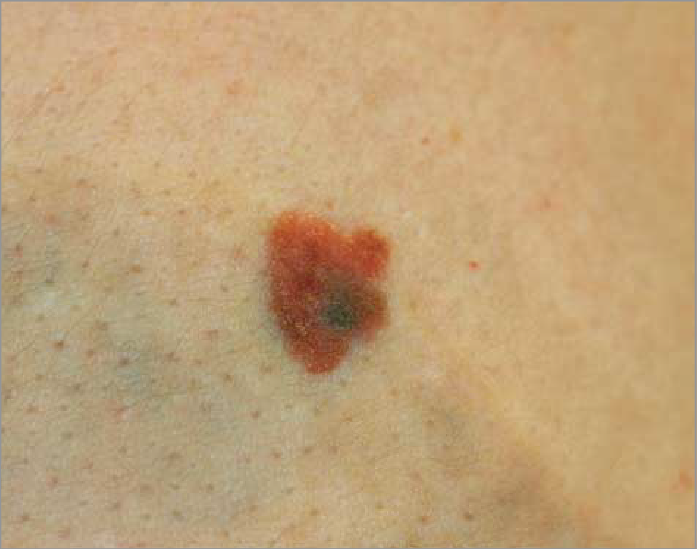Masked Melanoma: Cancerous Mole Hidden Behind Tattoo

When a 29-year-old man in Germany decided to get his tattoo removed, he also ended up removing a mole, hidden within the colorful designs, which turned out to be cancer, according to a report of his case.
The tattoo covered both of the man's arms, and his chest. He'd had it for 10 years before deciding to have it removed — a procedure done millimeter by millimeter with a laser. Several years into the process, a mole on the man's shoulder was revealed, in an area covered with black tattoo ink.
Although doctors can usually examine moles to determine whether they may be cancerous, the ink that had blended into the skin's pigments made such an examination difficult. The doctors decided to stop the laser treatment until the man agreed to have his mole removed, according to the case report, published July 31 in the Journal of the American Medical Association.
Changes in the shape, color or size of a mole can be signs of melanoma, the deadliest type of skin cancer that is most treatable when discovered early. While tattoos do not cause melanoma, they can obscure one, the researchers said. [See Images of Melanoma Growing within a Tattoo]
"Sometimes, depending on the color of tattoo ink, it can make the mole look more irregular," said Dr. Doris Day, a dermatologist at Lenox Hill Hospital in New York who was not involved in the man's case. "You can't see the borders clearly, and it may make something seem more or less dangerous."
After multiple requests by the doctors, the man finally agreed to have his mole surgically removed. A biopsy found the mole was, indeed, a growing tumor. Fortunately, it didn't seem to have spread to other areas of the man's body, the report said.
Doctors strongly caution against getting tattoos that cover or come close to a mole. But another option is to take a photograph of the mole before getting a tattoo around it, Day said. That way, a doctor who examines the skin in the future has something to compare to.
Get the world’s most fascinating discoveries delivered straight to your inbox.
For people who want their tattoos removed, "skin should be examined as thoroughly as possible for hidden pigmented lesions," the researchers said in their report, and if a suspicious mole is found, it should be biopsied before laser removal is performed.
Email Bahar Gholipour. Follow LiveScience @livescience, Facebook & Google+. Original article on LiveScience.com.




